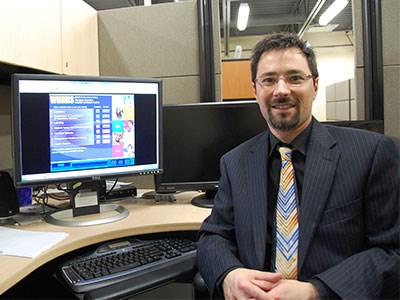NORCAT, a Sudbury-based industry training and development centre, is partnering with the Sarnia-Lambton Industrial Education Co-operative (IEC) to develop standards and an accreditation process to deliver training programming across Ontario.
This program focuses on fall protection and will provide contractors and transient workers with recognition of their safety training in both the mining and the oil and gas sectors.
Jason Bubba, NORCAT'S training and communications director, said often experienced and highly-killed workers are required to be re-trained on the same content several times whenever they venture onto a new job site due to the lack of a standardized and accredited training framework.
“Within a year they may do fall protection three or four times. They already know the information, but it takes lot of time to get on the job site and to get to work.”
This partnership will enable a worker in southern Ontario to have their training credentials recognized in Northern Ontario and reduce those redundancies while ensuring the worker meets government regulations.
The IEC is a partnership of experts in education, labour, contractors and industry that delivers best practices in safety and competency training.
Like NORCAT, IEC also offers fall protection for workers in southwestern Ontario's oil and gas industry.
Workers who receive safety training at NORCAT or through e-learning training modules, such as a mining contractor, are issued a wallet card or are registered in their database as proof they have been properly trained.
“We evaluated the (IEC) program very carefully and made sure they meet the standards to access the mine sites in Northern Ontario as well as the oil and gas sites in southern Ontario,” said Bubba. “There are some differences, but we'll add a few components because of the nature of sites.
“Now when a worker goes from southern Ontario to Northern Ontario, their credentials will go with them.”
A worker's training records will be managed and accessible through NORCAT’s secure advanced digital network. NORCAT's proprietary Training Record Management Sustem currently manages more than 100,000 individual records.
That database is accessible by mining companies and work camps across the North.
“If someone shows up on a site and says, I have a fall protection and shows a certificate, we don't know if that's valid, and if it was a 15-minute or five-hour program. It's hard to accept credentials like that,” said Bubba.
Northern workers will be afforded the same courtesy when they go south. “If they do fall protection at our site, those records go into our database. Now we will be accepting the records from IEC so (the companies) will have the ability to import records directly.”
Bubba said IEC and NORCAT are almost distant cousins and he's hopeful this colllaboration can grow beyond sharing digital records.
“I've visited them a few times and they are like a mini-NORCAT,” said Bubba. “It's uncanny the resemblance they have to us.”
Bubba said the whole initiative began by talking to clients to find out what programming is working and what's not.
“The trades unions brought it to our attention through discussions and through quality improvement, and we acted on that.”
Bubba said representatives from the Sarnia-area oil and gas companies are planning to come to Sudbury this spring to see how the mining industry handles the contractor access to job sites. “They're very keen to implement these same strategies.
“We're hoping to bring some of these oil and gas companies to our key mining clients and say here how's this is implemented in Northern Ontario and how site access works.”




